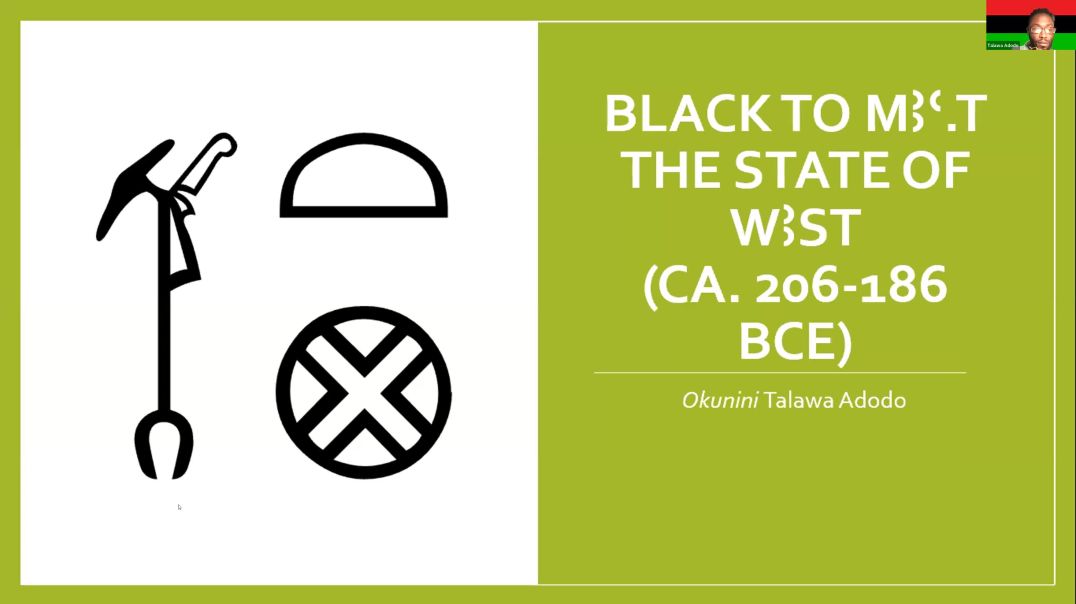History
Ɔbenfo put me on to this scholar Professor Nafafé that focuses on trans-Atlantic captive history, in the I Never Knew TV video launched 1/6/2026 titled "Why Many Black People Are Denying Their Blackness and Why It Needs To Stop - Obenfo Obadele Kambon". While this video is in Portuguese, Professor Nafafé delves into the history of how trans-Atlantic captivity occurred, and a statement that stood out to me that he stated was all (Black) kings involved in captive selling were conquered by eurasians.
Conferência com Prof. José Lingna Nafafé (Universidade de Bristol, Reino Unido)
Trailer for the first part of the upcoming two-part documentary 'Danhomé & Vodun' from Onuora Abuah. Onuora travels the West African nations of Benin and Togo, in order to find out the true essence of Vodun, and the history of the Kingdom of Danhomé whose people worshipped it.
ASCAC Midwest 2025 Presentation "Black to Ma'at: The State of Waset (ca. 206-186 BCE)" focuses on a Kmtyw Restoration movement that occured in the isfet period of greek occupation of Kmt.
In the spirit of REPARATIONS we must embark on a journey of self
examination to see how SCHOOLING AND CHURCHING have normaized the results of SLAVE-BREAKING so that the victims of this cruel process now comfortably and WITHOUT SHAME wear all the marks
of a defeated people.
This Interesting Ghanaian Movie narrates the cultural history and unification of Ghana by a gifted child who grew up to be a powerful young man. It promises to be educational and insightful.
Film based on a djeli telling of Sundiata Keita
tells an amazing scholarly detective story that searches for -and finds- meaningful links between African Americans and their ancestral past. It bridges hundreds of years and thousands of miles from the Gullah people of present-day Georgia back to 18th century Sierra Leone. It recounts the even more remarkable saga of how African Americans have retained links with their African past through the horrors of the middle passage, slavery and segregation. The film dramatically demonstrates the contribution of contemporary scholarship to restoring what narrator Vertamae Grosvenor calls the "non-history" imposed on African Americans: "This is a story of memory, how the memory of a family was pieced together through a song with legendary powers to connect those who sang it with their roots."
Why Didn't We Fight Back? - Introduction to Gullah & Black Seminole Wars by Baba Wekesa Madzimoyo of AYA Educational Institute https://www.ayaed.com
In this analogy Baba Ọmọ́wálé Malcolm X. uses the fox and the wolf to describe the tactics of white liberals and white conservatives.
Unfortunately I couldn't attend as it was on the same day that I had to meet the Ambassador to Burkina Faso about the Treasury Bills Proposal. Civilization and Technology started in Africa but we couldn't develop it, by Nana Yaw Wi Asamoah Boadi










